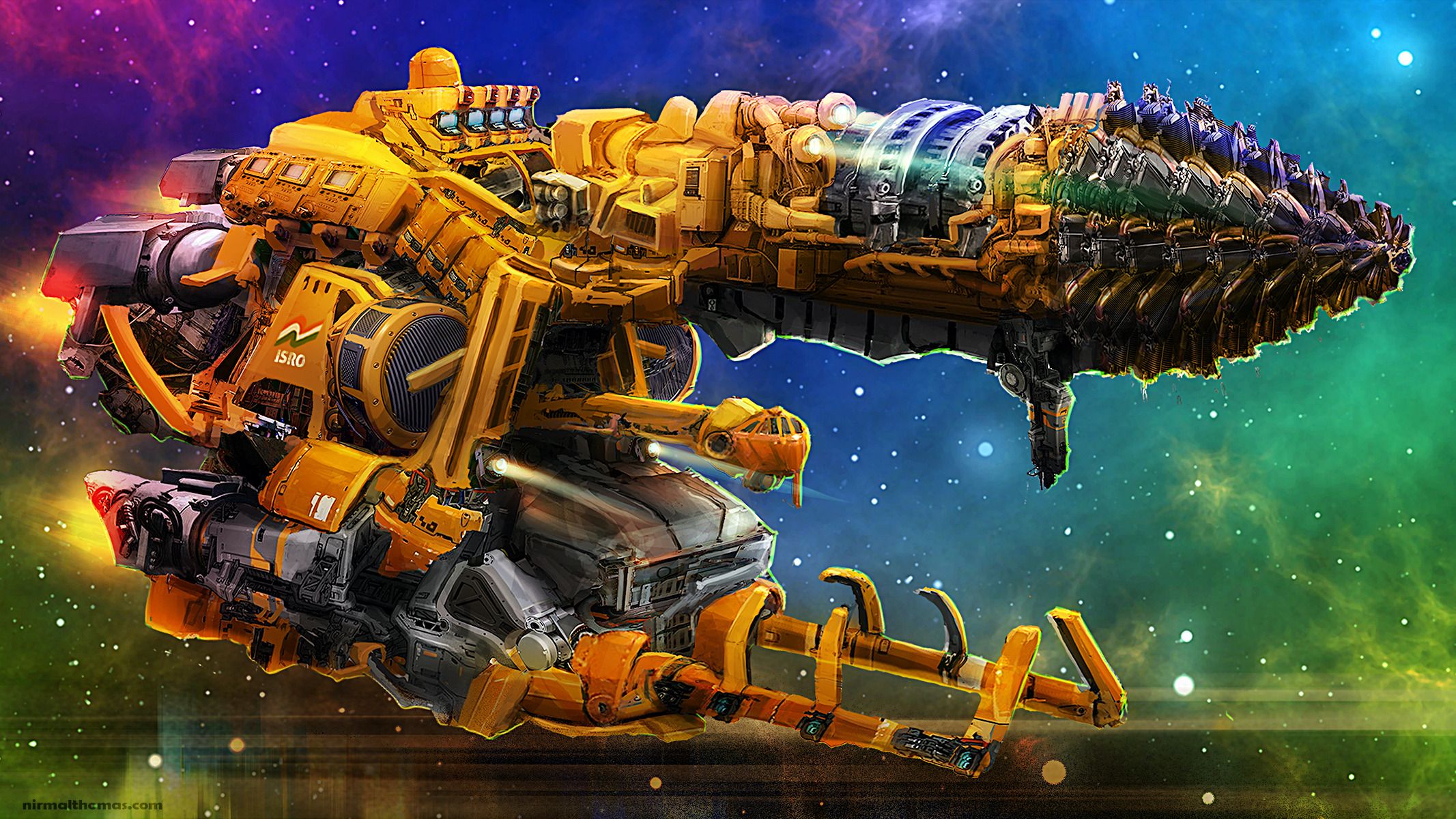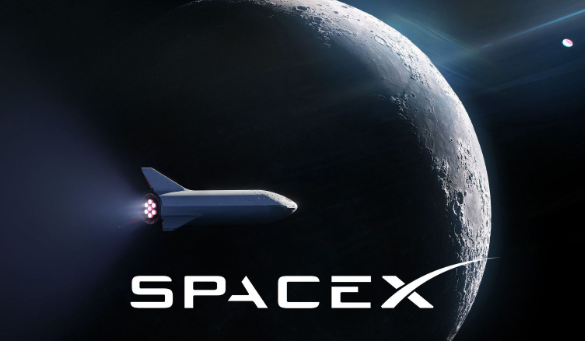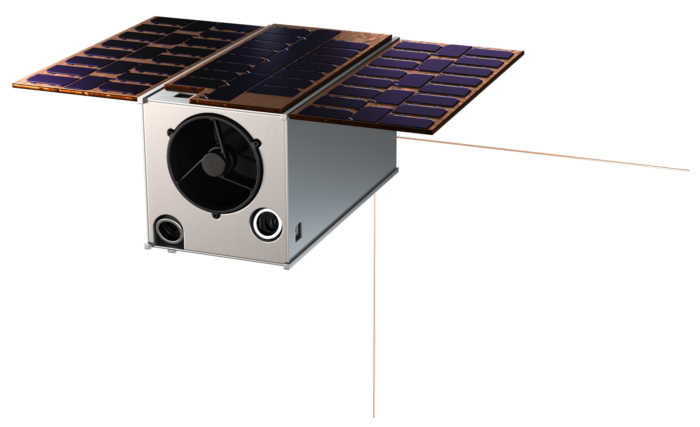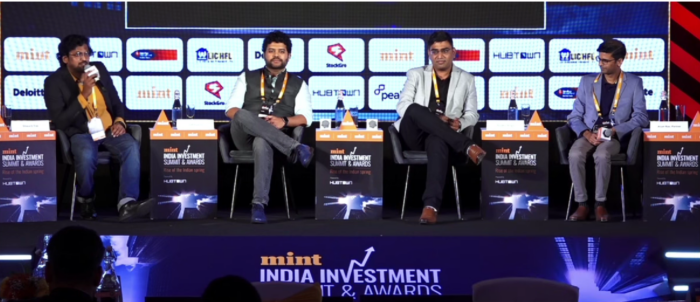Spacefaring & quantum futures. Research conducted & personal views expressed are my own.
Did you know that India has one of the biggest economies in the world? It ranked as the fifth’s largest by nominal GDP. India also has an important demographic trend. With the second largest population on Earth, more than half of its people are in the working-age group. A great percentage is under 34 years old.
A robust and vibrant economic powerhouse. India bets big on critical sectors for such an increasingly young and skilled workforce. These sectors include manufacturing, energy, telecommunications, biotechnology, and of course space.
In the space industry, India plays the big leagues. It pushes forward the boundaries of its space program to develop home-grown components, in-house expertise, and technologies that are indigenous to the country. With government expenditure that is substantially less than that spent in the national space programs of the United States, Russia, and China, India pursues its space dreams, strong and steady.
A Steady Record of Success: India Wins Big
India holds a steady record of firsts and successes. With the Mars Orbiter Mission Mangalyaan (MOM) launched in 2013, India is the first country in the world, which places a spacecraft in Mars orbit on its first attempt. It is also the first Asian nation to reach Martian orbit. The MOM spacecraft has captured stunning images from the Martian surface. The mission continues to conduct scientific observations, tests, and experiments.
India is also the first country to launch the largest number of satellites in a single mission. Onboard its Polar Satellite Launch Vehicle – PSLV, which also goes by the moniker the Workhorse, 104 satellites were launched to orbit in the 2016-2017 PSLV – C37 mission. The 96 nanosatellites onboard the PSLV – C37 were from commercial customers in the United States. The San Francisco-based Earth imaging company Planet was its top customer. It sent 88 of its Dove satellites for Earth observation – EO in this mission.
India would have been one of the first countries to successfully land on the coveted south polar Lunar region in 2019 with the Chandrayaan-2 mission. Unfortunately, there was a loss in communications with the Vikram Lunar Lander on its final descent to the Moon’s surface.
The spacecraft remains in orbit though. It continues to deliver remarkably precise imagery and scientific data. On its first deep-space mission Chandrayaan 1 to the Moon in 2008-2009, India collaborated with National Aeronautics Space Administration – NASA to help discover water molecules on the surface of the Moon.
Traveling Diaries: My First Point of View About India
I visited India from late December 2000 through February 2001. I spent the majority of my time in the northern part of the country in the city of Lucknow. It is the bustling capital of the state of Uttar Pradesh. With an incredibly rich history, it is one of the most concentrated cities of India.
I was part of an international youth delegation from Costa Rica for a 28-day camp-based program. This camp was hosted by the CISV Lucknow Chapter as part of the umbrella organization Children’s International Summer Village – CISV. As Junior Counselor, I supported overall leadership efforts and liaised between the children and the adult delegation leaders. It was a joyous and enriching experience. I still keep friendships made during the camp…
Post-camp travel plans were unfortunately cut short for the Costa Rican delegation. A 7.7 magnitude earthquake hit the Gujarat – Bhuj region on January 26, 2001. The earthquake caused great havoc and loss in the northern region of India and Pakistan. None of us at the camp experienced harm. The children’s parents were concerned about safety in case there were aftershocks.
I, however, was set on the idea to get to know this vast country and its people. I had traveled halfway across the world. I was excited to visit Delhi, Agra, Varanasi, and Jaipur. All the tour bookings for the next couple of weeks had been meticulously arranged in advance.
I could have headed back. I decided to stay instead. My parents couldn’t contain their anxiety back home. I was confident that I would be fine. I’m glad I did. I especially remember how the sun changed to a magical shade of pink-orange at the time of sunset.
It painted everything with subtle shades of amber, blue, and purple. There was always an abundance of colors, smells, sounds, and people in India. There was always a bustling and unique energy.
My desire for firsthand experiences as I traveled across northern India serves as a metaphor for the country’s growing role in the global space industry. India puts its faith in its growing space industry, technologies, and commercial applications at home and abroad. Like in classical Newtonian speak, the space industry in India is about movement. It is about pressing forward even where there is no fixed path to a future in space. The path for India is in doing, testing, and seeing new things firsthand.
Space is Open for Business in India
The Indian Space Research Organisation – ISRO is at the forefront of India’s modern space industry. This official government agency was established in 1969 under the Department of Space. Working alongside the private sector for components and services, and with household companies such as Larsen and Toubro, Godrej, and Alpha Design Technologies, ISRO has developed competitive launch vehicles and sounding rockets.
Preparations for India’s first human spaceflight mission Gaganyaan are also underway. This launch is scheduled for 2022 to coincide with India’s 75th-year anniversary of independence. The launch vehicle for this mission is the Geosynchronous Satellite Launch Vehicle (GSLV MkIII). This launch vehicle carries heavier payloads.
Like most bold initiatives in space that require extended long-term thinking, an experimental flight of the GSLV MK-III, the Crew Module Atmospheric Re-entry mission – GSLV MK-III-X/CARE was already successfully conducted in 2014 in preparation for Gaganyaan 2022.
Commercial offshoots of ISRO include the Antrix Corporation Limited – Antrix. Antrix is a company owned by the government and is under the administrative control of the Department of Space. Antrix seeks to commercialize the technologies and services from the space program. The NewSpace India Ltd – NSIL is another commercial arm of ISRO. NSIL was incorporated in 2019. With a growing need for commercial services, NSIL’s mandate and functions overlap with Antrix. This is to meet national and foreign demand for the commercial markets of space technologies and its applications.
One of those lucrative commercial markets relates to satellite launches. Since 1999, ISRO has successfully placed 319 satellites from 33 countries in orbit from India’s primary spaceport. The spaceport is located on the east coast island of Andhra Pradesh in the southwest of the country. ISRO is also on the final sprint to launch its new Small Satellite Launch Vehicle – SSLV. This newly manufactured launch vehicle caters to the small satellite launch market.
Connecting With The Space Community of India
I had the opportunity to chat recently with Huma Siddiqui. Born and based in Delhi, Huma is a Senior Correspondent at The Financial Express. This is the major daily Indian business English-speaking newspaper. It has been in operation since 1961.
Huma reports for its online division on a wide variety of topics including security, international politics, military affairs, economic diplomacy, and space cooperation. The breadth and depth of her articles are remarkable. A seasoned journalist with more than 30 years in the trade, Huma has firsthand knowledge of the long-term changes and trends of the Indian space program.

Huma Siddiqui. Senior Correspondent. October 2020. I asked her about what in particular seems to be creating a lot of media buzz and what’s trending. Huma stressed that India approaches the space industry on its terms. Security concerns are always on the radar. It is situated in a geographic area where the military stakes are high. She shared the following:
Space has become more of a diplomacy issue. Who comes to me for imagery, training, best practices. Which are the companies that are coming…. Space cooperation is nothing new. It really picked up post-Mars mission in 2013. Countries are very interested in coming to India for the launches…
I was intrigued by Huma’s observation of the increase in launches. Space missions and projects in India have had to be fiercely lean and super-efficient. With considerably less budget in comparison to other space agencies in the world, ISRO has succeeded by finding ways to streamline costs across the board. They have managed to be cost-efficient and still keep on a steady and impressive streak. The availability of skilled talent cannot be underestimated. Huma confirms this.
People have started to come to India because it is cost-effective. They spread the word. India has the facility and capability to train Mexican scientists in forest firefighting. Argentina signed an agreement. This is not getting a lot of traction.
Why? Because space has been kept under wraps and low profile for security concerns given the delicate neighborhood. Suddenly opening the private sector has become the buzz…
Huma expands on an important concept. ISRO has always collaborated with the private sector at home. Indeed, like many other space agencies across the world, space missions are the result of public-private alliances. What is different today in India are the ongoing conversations about increased privatization. There’s an increased momentum to democratize space activities among private players.
The Space Activities Bill, which was introduced in 2017, is in its final stages at the Indian Parliament. The Bill proposes important changes for its bustling space private sector. These changes include the green light to build rockets, satellites, and to service the launch market. Doubling down on this energy and momentum, ISRO has also released the new draft Spacecom Policy 2020. This draft policy outlines increased openness so that the private sector can use existing space assets in orbit as well as to encourage the services of satellite launches for foreign customers.
With such a prolific career, Huma is excited about the recent developments in space research, travel, and exploration in India. When I asked what will be important for the future, she added firmly:
There is a need for India to have well-established space industry players who can mentor the innovative startups as India is moving towards privatization – which includes not only privatization in data and imagery analysis, but for remote sensing too…
I later connected with Aravind Ravichandran who serves as an independent consultant in the space sector. Aravind writes often about the value of Earth observation – EO as viewed from space. Originally from Chennai, South India, he has degrees in computer engineering and international business, as well as a master’s of science program from the International Space University.
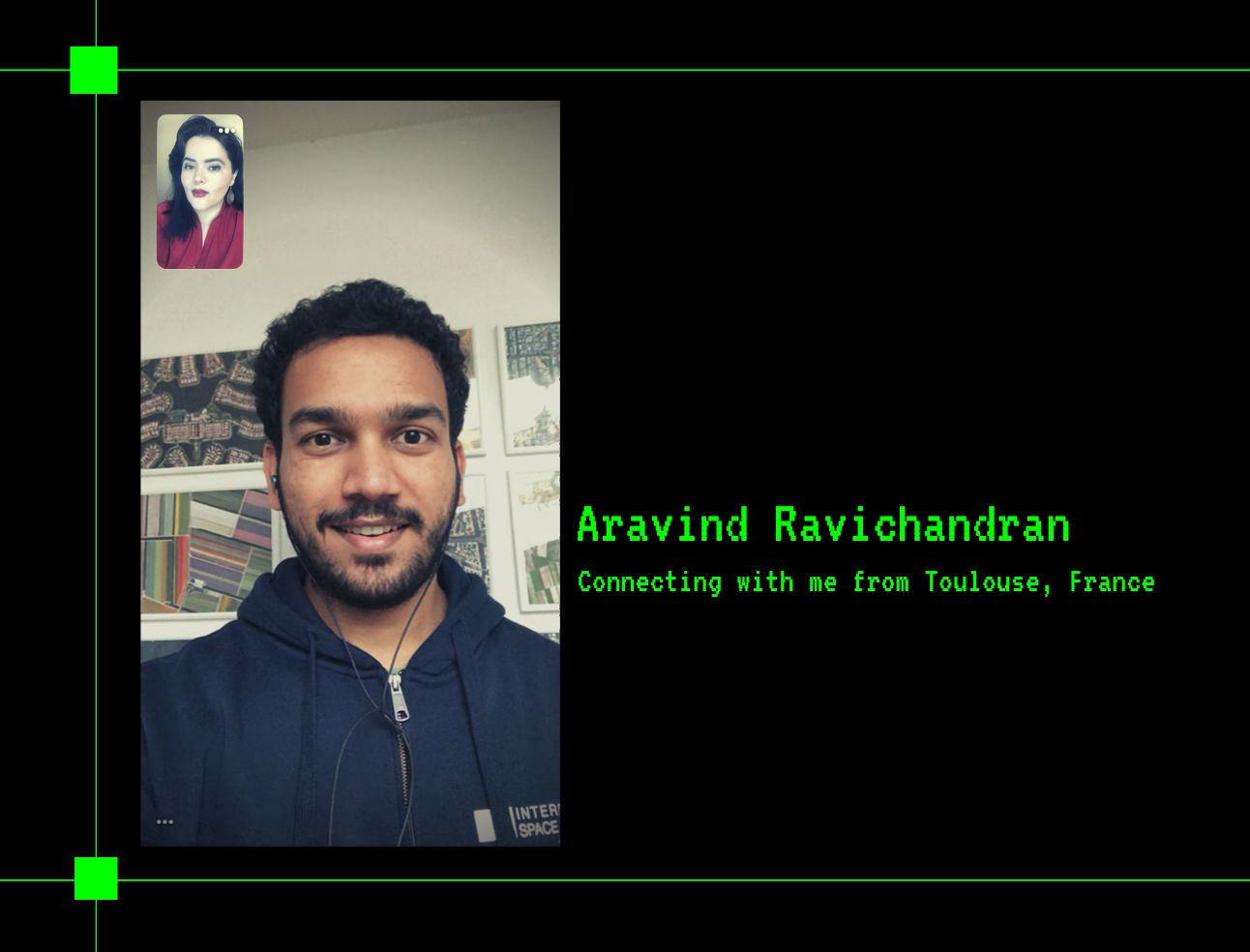
Aravind Ravichandran. Independent Consultant. October 2020. For Aravind, insights from space are paramount to our modern existence. Satellite-based observation allows us to detect significant patterns and extrapolate trends over time to support disaster mitigation, critical infrastructure, defense and intelligence, and many more areas. https://www.youtube.com/embed/uifZUltE0Nk
Aravind has been based in Europe for some time now. Interested to hear his thoughts about the space industry, he described his career path for me:
The space industry is one of the industries that you get in because you want to get in. I wanted to work on big problems. What can be a bigger frontier than space? The interest was there since I was a child.
In India, you didn’t hear much before. You didn’t know what to do with that interest… In the last three years, the coverage has skyrocketed across the board. Almost every other day, there’s something about space. Things are definitely changing. One is the overall globalization of the space industry…
In our conversation, Aravind also addressed India’s competitive edge for cost-effective launches.
Any talent that you need in the space industry is available and very efficient. You have multiple engineers to work on your launch and to make your satellites. It is very efficient to have operations in India…. We’re going to have a very important role in launches.
When I asked him what has huge growth potential, Aravind focused on the market of data analytics. With more satellites going up and more data coming in, the market prospects for the downstream analytics of satellite data and imagery are promising. A recent report by the research firm Mordor Intelligence, which is based in Hyderabad, also coincides with Aravind’s insight.
According to their research, India will be a high-growth rate area for the satellite-based EO market. This is especially evident for the years 2019-2024. With a strong pool of software developers and engineers that are also passionate about the space industry, like Aravind, India is undeniably well-equipped for this lucrative subdomain.
India is already good in data analytics and software products. It’s surprising why we’re not analyzing satellite data. Satellite data is not easy to access… It’s actually easier to find data from a foreign company launching [satellites] in India. Now that data [is becoming more] available. In the next 3-5 years, it will be a big strength for the country…
Reports indicate that in a couple of years, India will become a leading global hub of software developers. Young, skilled, and eager to make a mark in the space industry, many entrepreneurs have set up shop at home. The startup ecosystem is growing rapidly as well. Aravind adds the following insight:
The government has started working with the new privatization bill in Parliament so it translates into action. We need it because there have been a couple of startups doing different things. They’re getting funding, international agreements, and international customers. I hope [the government] realizes, they can’t keep the lid closed…
Aravind like Huma is excited about the future of India’s role in the growing global space industry. Both point out that special attention should be paid to emerging startups. Their insights about the growing startup space economy remind me of Rabindranath Tagore.
I first read about Tagore in my travels across northern India 20 years ago. Tagore is a famous polymath that was born in West Bengal in 1861. Best known for his writings and poetry, Tagore is the Recipient of the Nobel Prize in Literature in 1913 and the writer of independent India’s national anthem. Tagore is quoted to once saying:
You can’t cross the sea merely by standing and staring at the water…
Key Takeaways: Why India’s Growing Role In The Global Space Industry Matters
To become a multi-planetary species, we need to focus time and effort on space travel, research, and exploration. This focus has value for the present and the future. The space industry creates real and tangible economic, scientific, and diplomatic benefits. I have written about this in a previous article as well. The importance of investing in the space sector today cannot be underestimated. Private-public partnerships are also essential for a robust space ecosystem.
India’s growing role in the global space industry is valuable for India’s economic future and everyone. The path to a future in space is in doing. The space industry is increasingly inter-dependent and multi-stakeholder. The saying that a rising tide lifts all boats applies. It matters that India leaps forward and pioneers ahead with end-to-end indigenous technologies and capabilities.
It matters that India leverages many of its strengths such as a skilled and increasingly young workforce to reach high for the stars and make way for future generations. Those who have contributed the most over the past decades in the global space industry set a course high and push ahead. I’m looking forward to many more successes and developments like those in India.
The planets are far and the vacuum of space is dark. Space presents us with millions of unknowns. There is no set path. There is no set road. From all corners of the world and from all backgrounds, doing space is the ultimate test for our civilization.
//
The artwork at the top banner is titled: Spaceminer Ship by the concept artist Nirmal Thomas. Nirmal is based in Karnataka, southwest India. He is also enthusiastic about the future of India in the global space industry. This particular piece dates to 2017 when Nirmal was designing a new game about Space Mining.
I specifically selected this piece about conceivable space futures given the recent asteroid mining missions such as that of OSIRIS-REx. Artists like Nirmal convey compelling stories with powerful visual imagery. Art is paramount to the space industry. It connects our civilization with a shared visual history across time. This helps us imagine a shared future in space on more intuitive levels. Join Hacker Noon
Create your free account to unlock your custom reading experience.
If you found this article to be informative, you can explore more current space news, exclusives, interviews and podcasts here.
Share this article:
